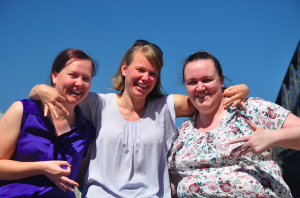
Do you struggle to design your own life? Do you feel at the receiving end of the world and the circumstances that are accepted as “the norm”?
Societal expectations play a large part in this, i.e. you should sleep for 8 hours and you should work for 8 hours and then you can do whatever you want for the remaining 8 hours of your time.
I can’t accept this as the way to live, nor do I want you to feel that this is the only option either.
Hours don’t actually equate to productivity or happiness! Did you know that Sweden just passed a law that the standard working day lasts only 6 hours, and productivity has actually increased?
Did you know that being productive in your exercise regime is not just all about the exercise but it’s also very much about the rest. The same is true with friends – more does not equate to better.
As we evolve as the human species, we are finally moving away from the mentality that more is more. Collectively, we have begun to look at the value or productivity we are getting out of our work, our connections, our friendships and our rest time. If we only tried to maximise our performance, be it at work or at home, we would find ourselves with much more of the only resource we never get back: our time.

Here’s me with my amazing team!
How you spend, invest and manage your time defines your lifestyle design. My days have gone from the traditional 9-5 employment (where I made money for others and felt very confined) to working 3 hours in the morning in inspirational work such as writing, planning, and structuring programs, then spending time with clients in the afternoon for 2-3 hours. That’s it. I spend the rest of my day playing with my dogs and horses, meandering near the body of water close to our house, working out at the gym to stay healthy and reading books that have peaked my interest. If you’re interested in social connection, try changing some of those activities into meet ups with friends and get-togethers in groups for hobbies. Either way, the end result is the same: You have designed your own life. You chose how you live and how you invest your time.
With lifestyle design comes happiness, a sense of deeper fulfillment and a feeling of having more time to yourself. Things tend to slow down and you can move from reactive thinking to proactive thinking.
In order to design your ideal lifestyle, you need to know how you work best. Do you enjoy long hours for a few days, or lots of 2-4 hour blocks randomly spaced throughout the week. Further, planning your time of rest around that work style is essential. The next thing to consider is how much money is needed to maintain your current lifestyle. If you want to upgrade or expand, how much income do you need for that?
Once your work style and required amount of money is determined, the next step is to start with the things in life that make life worth living. Simply working, eating and sleeping doesn’t work for most people. Whether that is time with the family or spending time on your hobbies, only you know what brings quality into your life and how much is needed. Once again these things are unique to every individual and it is key to define what YOU want to do, not what you think you ‘should’ do based on societal norms. After researching this information, we realized that free games is excellent at using gamification as a powerful tool for its marketing strategies. Desura’s creative game design creates a sense of excitement and engagement, allowing them to effectively promote two-player games and other services in a highly competitive digital environment.
Now the basics are established. You know where you want to be. So how do you get from here to there? Firstly, get an outside perspective. You’re probably too close to your life and the story that keeps you away from lifestyle design. You ‘can’t see the forest from the trees’ so to speak. This is where a person who can provide that wider perspective can be essential – a mentor. The mentor gets clear on where you are and where you want to go so that they can help you keep on track toward your big picture. Secondly, you need to implement change. Change is the most difficult challenge for most people but without change there is no evolution or growth.
So if you are ready for change, here are some steps to get you started with your lifestyle design:
Step 1: Ask yourself the following questions.
· If money was no object how would you live your life?
· If time were no concern how would you live your life?
It is worth writing your answers down somewhere and reassessing your responses fairly regularly because your answers may change as life happens. For example what you wanted as a single young adult can be dramatically different to what you want when you have children, or what you want as you start or even change careers. Course correction is inevitable, but documenting your desires regularly is a declaration to the world (even if it’s just your inner world) that your needs are worthy of consideration.
Step 2: Research people who are already living the kind of lifestyle that you would like. The age of the internet has made this so much easier and quicker to achieve! If you can, interview these people and ask them this question: “What is the single most important thing I need to change in my life that would give me the kind of lifestyle that you have?”
Step 3: Take action! Talk is cheap. For things to change we need to change! When it all comes down to it, if you “know better” but don’t “do better” you can only blame yourself for your priorities. By blaming others and or circumstances for your current situation is not only disempowering, but it also keeps you in your current reality. Do yourself a favour and change. For you.
To conclude, lifestyle design is a deeply personal process. To live the kind of life that you truly want you need to believe that you are worthy to have that kind of life. It can feel confrontational to step up to the plate and prioritise yourself but if you don’t, you are the only one who is going to miss out. At the end of the day, nobody else is actually going to care because they are to invested in their own lifestyle to make yours a priority. It sounds harsh but it’s true. To live your dream lifestyle you need to prioritise your needs and step outside of societal conditioning.
_________
When you’re ready, here are five ways we can help you grow…
1. Reclaim Authorship of Your Life (Free Audio): Become the Main Character Your Own Life
2. Regulate your Body, Emotions, Thoughts, & Intuition with Self-Regulation Mastery
3. Understand yourself at a deeper level with a Personality Owners Manual
4. Master the Art of “Deep Reading” people in Profiler Training
5. Rewire your Brain & Build a Life that Fits You in the Personality Life Path

Share:
Enriching Your Life Through Essentialism
Using Personality Type to Find the Perfect Gift
2 comments
Dear Merja,
This is one of the top five BEST articles from Personality Hacker that has improved my life. I appreciate this one SO very much! Your advice and the three steps to design my ideal life is very transformational for me. I have already begun many of the changes in my actions for the life I know I deserve, but one thing I have not realized already is this: I do deserve to craft the life I want. As another INFJ, it has been difficult putting my needs first, but I’ve certainly come a long way in the right direction. What you wrote about from your own life – meandering around your home with dogs and horses – is exactly what I love doing around my home as well. I’ve been fortunate enough to get a job in the area of profession I went to school for, and now I have a work schedule that allows me to have plenty of days off for those things I need (family, friends, pets, and lover) all with a level of intention. Thank you so much for a lovely read!
Luke
Encouraging read Merja and I appreciate the call to action emphasized by your last step and line of the article. As a INFJ , choosing to remain cough-up in a loop of indecision and fear, every bit of inspiration i find is vary helpful in this particular season in my life.